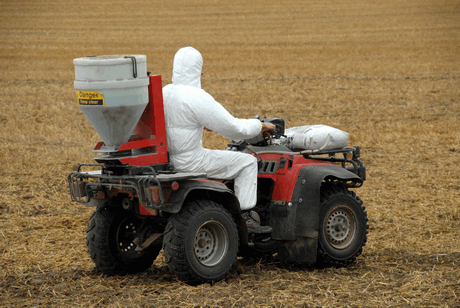Slug control threatened by metaldehyde residues being found in water

A valuable slug killer could vanish unless growers take more care with it. That’s the warning to users of metaldehyde slug pellets after traces of the widely used active ingredient were found in water supplies.
Growing concern that careless use could lead to the chemical being banned has prompted manufacturers and suppliers to launch a best practice guide*.
Until about 18 months ago water companies could not analyse supplies for metaldehyde. Now they can, and Bristol Water detected it for the first time – in the Sharpness Canal in 2007.
Although amounts were well below health impact level they exceeded the 0.1parts per billion EU limit for any individual pesticide in drinking water.
“Other companies have also found traces but not at very high levels,” said BW spokesman Paul Kelson.
Neither of the firm’s treatment works can yet stop metaldehyde passing into the water it supplies, and installing equipment to do so would cost £80m.
“As an industry our preferred solution is to see whether a catchment management approach can reduce levels in raw water,” said Mr Kelson.

Growers are being urged to use metaldehyde slug pellets responsibly
Stakeholders had agreed on an industry-led Voluntary Initiative approach, Paul Fogg, spokesman for the Metaldehyde Stewardship Group confirmed.
According to Makhteshim Agan’s Mike Barrett the metaldehyde discovery mirrors what happened to isoproturon (IPU) herbicide. “It’s a frighteningly similar scenario.”
Despite the EU being content to re-register IPU it was eventually banned, partly after pressure from water companies, Mr Barrett pointed out.
A ban on metaldehyde could halve oilseed rape yields and slash wheat output by 30% costing growers £500m a year, he estimated.
“It’s a real threat, and we’ve got to work hard to prevent pellets from ending up in water. There’s a tendency among some users not to treat slug pellets as pesticides.”
The new guide reminds all professional farmers using slug pellets that they should be properly trained, hold application certificates and wear overalls and gloves when handling them.
“You often see people in jeans tearing around on quad bikes applying them. They wouldn’t work like that if they were applying foliar sprays,” said Mr Barrett.
Applicators should be carefully calibrated and every effort made at headlands to stop pellets getting on to field margins and into watercourses. Single Farm Payments could also be jeopardised, he warned.
“People must become more aware of the risks and change their behaviour. If they carry on misapplying and abusing them we run the risk of them ending up in water with all the potential consequences.”
It would be “criminal” if further products were lost for environmental reasons because label recommendations were not followed, said Steve Higginbotham of Stewardship Limited consultancy.
Ultimately operators should decide whether pesticide rates and timings are correct for prevailing conditions, he stressed.
A management decision to use slug pellets in September might have been correct. “But if, on the day of application, conditions meant pellets could be blown into hedgerow bottoms or streams the operator should be given responsibility to adjust the recommendation or postpone the application altogether.”
Frontier agronomist Brian Ross admitted that attitudes to slug pellets had often been too relaxed. “Legally they must not end up in water,” he stressed.
“If metaldehyde goes we’d be down to methiocarb which has limitations on crops and the number of treatments – and it’s more expensive.”
* ‘Slug Pellets – Metaldehyde Best Practice Advice’ can be downloaded from the Metaldehyde stewardship website.
Metaldehyde slug pellets
- Traces found in water supplies
- Water treatment not possible
- Ban threat
- Use guide published – follow it

